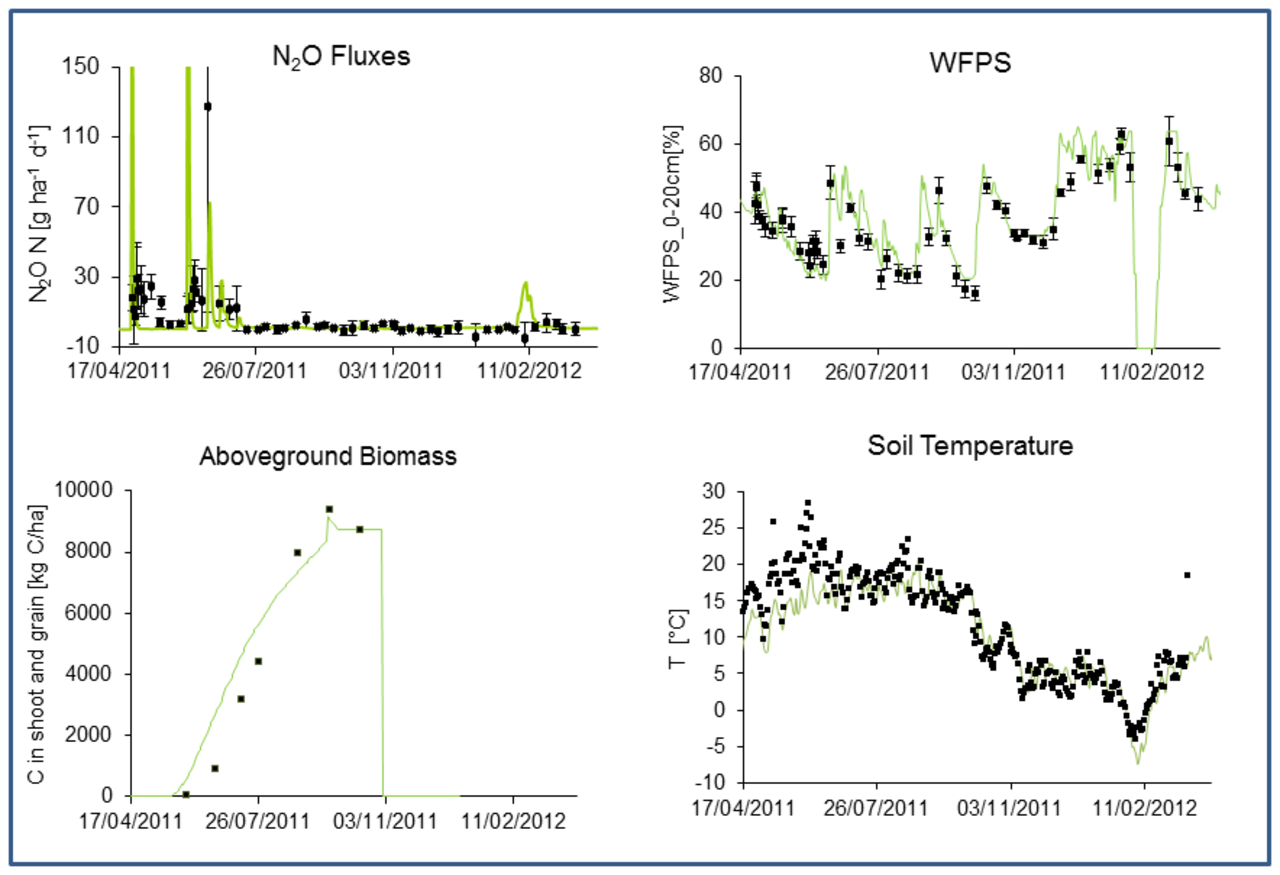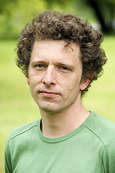Project
Measuring and Modelling Greenhouse- Gas Emissions and nitrate leaching of raw material crop rotations (MASTER)

Measuring and modelling greenhouse gas emissions and nitrate leaching of raw material crop rotations (MASTER)
Within the project MASTER we examine strategies to reduce nitrous oxide emissions and carbon dioxide emissions from raw material crop rotations. We analyse long term field experiments and use biogeochemical process models to estimate mitigation efficiencies.
Background and Objective
There is an increasing need for sustainable biomass production at the national and global scale. Bioenergy production contributes to climate protection because fossil energy sources can be substituted. Energy efficiency and GHG mitigation by agricultural biomass production are highly variable depending on the established management system and site specific environmental conditions. Meaningful GHG balances of these systems have to consider all GHG fluxes including direct and indirect N2O emissions from managed soils and CO2 fluxes by changing soil humus stocks.
The project “Measuring and quantifying mass flows in agro-ecosystems for greenhouse gas mitigation (MASTER)” analyses GHG budgets of various crop rotations for biomass production. Within MASTER our sub project “Measuring and modelling of greenhouse gas emissions and nitrate leaching in bioenergy crop rotations” aims to enable the process based model DNDC to estimate nitrous oxide emissions, nitrate leaching, crop growth of raw material crops and soil carbon stock development. We are interested in the relationship between greenhouse gas fluxes from managed soils shortly after establishing crop rotations for biomass use and after several decades when equilibrium between carbon inputs and outputs is reached.
Mitigation measures for raw material crop production will be assessed based on model results of the parameterized DNDC for important soil-climate mapping units across Germany.
Approach
The project is based on three longterm field experiments with raw material production in Viehhausen, Roggenstein (Bavaria) and Trossin (Saxonia). Each experiment covers several raw material crop rotations and treatments with variable N fertilisation types and rates.
During the project duration, measurements of nitrous oxide emissions for specific crops will be conducted by project partners TU München and LfULG. The Thünen Institute will analyse gas samples taken at the experimental plots. Because the experiment duration already covers about 6 to 13 years changes in soil organic carbon stocks in dependence on crop rotation and organic amendments can be quantified.
The experimental data will be used to calibrate the process based model MONICA addressing biomass production, nitrous oxide emissions and Corg changes in the topsoil horizon. We will conduct multi-site calibrations, e.g. searching for “global” parameter fields with best model performance for the combined field experiments. Model validation will be performed using data from completed projects (“Joint project: development and comparison of optimized production systems for the agricultural production of energy crops under the different conditions at different locations in Germany (EVA)”).
The calibrated model will be used to estimate effects of locally adapted mitigation options for climate-soil mapping units across Germany. Simulation periods will cover several decades to quantify effects after crop rotation establishment and at equilibrium. Mitigation scenarios will also cover a range of intensities of mitigation options (for instance a variable ratio of N from digestate application and mineral fertilisation or the frequency of intercrops.)
Results
The MONICA model was able to simulate all investigated management options and locations. Depending on the investigated variables and site conditions, MONICA achieved inconsistent model performance. MONICA achieved good to very good performance in reproducing soil carbon changes, soil temperature and soil water. Furthermore, yields were mostly well reproduced after calibration. Weaknesses were seen in the reproduction of nitrogen dynamics. Optimization of the N2O submodel significantly improved the simulation of annual fluxes. MONICA achieved overall better reproduction quality than conventional GHG accounting methods (Tier 1 and 2). This made the calibrated model suitable as a forecasting tool for simulating agricultural field-based GHG emissions under changing weather conditions.
Examination of the model scenarios revealed significant differences among the cropping methods considered and minor differences among the climate scenarios. Reduction in nitrogen fertilization and the cultivation and incorporation of alfalfa-clovergrass mixtures were found to be particularly suitable methods for improving the GHG balance on cropland. Here, reduction of fertilization reduced direct and nitrate-leaching-induced N2O emissions; green manuring increased carbon sequestration.
The spatial distribution of GHG potentials showed that the highest savings potentials can be achieved in central and southern Germany. This is due to the fact that higher N2O emissions were simulated in these parts of Germany. Compared to soil humus changes, a stronger influence of N2O emission on the GHG balance was observed. The potential for direct GHG emissions is strongly influenced by weather conditions and soil properties. Decisive site factors for emission formation potential were water capacity, temperature, pH, and initial soil carbon content.
The effect of climate scenarios on the GHG balance was not always clear. There was a tendency of increasing humus content depletion and decreasing nitrous oxide emissions with climate warming (RCP2.6, RCP4.5, RCP8.5).
Links and Downloads
Thünen-Contact

Involved Thünen-Partners
Involved external Thünen-Partners
-
Technische Universität München
(München, Freising-Weihenstephan, Deutschland) - Sächsisches Landesamt für Umwelt, Landwirtschaft und Geologie (LfULG)
(Nossen, Dresden, Deutschland)
Funding Body
-
Fachagentur Nachwachsende Rohstoffe e.V. (FNR)
(national, öffentlich)
Duration
3.2019 - 6.2022
More Information
Project funding number: 22032018
Funding program: FNR
Project status:
finished
Publications
- 0
Aiteew K, Dechow R, Fuß R (2022) Measuring and modelling greenhouse gas emissions and nitrate leaching of raw material crop rotations (MASTER). Braunschweig: Thünen Institute of Climate-Smart Agriculture, 2 p, Project Brief Thünen Inst 2022/40a, DOI:10.3220/PB1668506133000
- 1
Aiteew K, Dechow R, Fuß R (2022) Messung und Bilanzierung von Stoffströmen in Agrarsystemen zur Treibhausgasemissionsreduktion (MASTER). Braunschweig: Thünen-Institut für Agrarklimaschutz, 2 p, Project Brief Thünen Inst 2022/40, DOI:10.3220/PB1668505699000

![[Translate to English:] [Translate to English:]](/media/_processed_/6/4/csm_titel_CO2Kampagne8_afeea2273e.png)
![[Translate to English:] [Translate to English:]](/media/_processed_/4/1/csm_titel_93px_CO2Kampagne8_9b0f3354d4.png)





